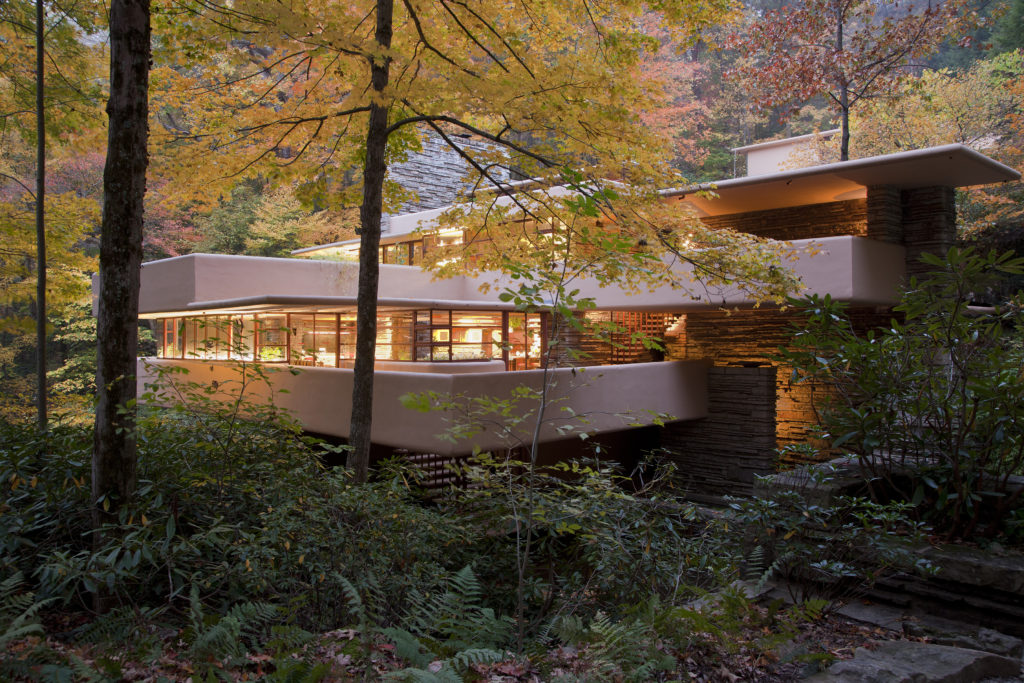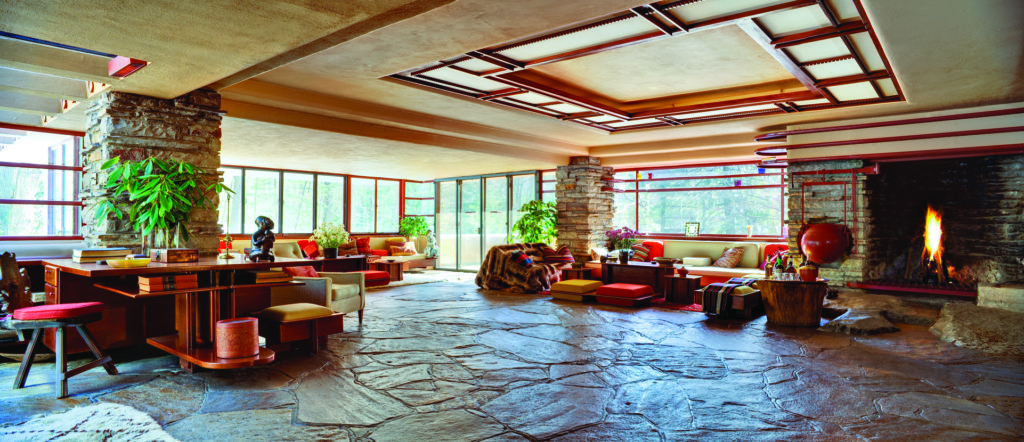Fallingwater Named World Heritage Site
Honor recognizes Western Pa. home that will ‘change the way you see the world’
By Rick Wills
Published July 15, 2019
Read Time: 4 mins
You may have seen it in baggage claim: a scale model and 3-D video of Frank Lloyd Wright’s Fallingwater, Pittsburgh International’s tribute to one of the world’s most famous houses, designed by America’s most famous architect.
Located 90 minutes from Pittsburgh in a remote and heavily wooded section of Western Pennsylvania, Fallingwater drew more than 168,000 visitors last year. More than 5 million people have visited the home since it was opened to the public in 1964.
Many more are expected to come now that the house has been added to the elite World Heritage List by UNESCO, the United Nations Educational, Scientific and Cultural Organization.
The designation, announced last week, places Fallingwater in rare company.
There are just over 1,000 such heritage sites worldwide, 24 in the United States and only one other in Pennsylvania – Independence Hall.
“This recognition is a tremendous honor, one reserved for the world’s most treasured places,” said Justin W. Gunther, vice president of the Western Pennsylvania Conservancy and director of Fallingwater.
As prestigious as the heritage designation is, the recognition was hardly needed to put the home on the map.
In 1991, the American Institute of Architects in a national survey recognized Wright as “the greatest American architect of all time,” and voted Fallingwater, built in 1939, as “the best all-time work of American architecture.”
Travel+Leisure Magazine wrote that Fallingwater is “one of the 12 landmarks that will change the way you see the world.” It was designated a “Place of a Lifetime” by National Geographic Traveler Magazine.
Over the years, visitors have included Albert Einstein, Hillary Clinton, Robert Duvall, Brad Pitt, Angelina Jolie and members of the U.S. Supreme Court, who visited while attending a nearby conference.

UNESCO’s World Heritage Committee chose 29 sites total this year. (Photos courtesy of the Western Pennsylvania Conservancy)
Iconic attraction
Wright designed Fallingwater in 1935 as a vacation home for Edgar J. Kaufmann, Sr., owner of Pittsburgh’s Kaufmann’s department stores. In 1963, his son, Edgar Kaufmann Jr., entrusted the house and its 469 acres of surrounding land to the Western Pennsylvania Conservancy.
Wright designed Fallingwater’s dramatic terraces to give the appearance that the house hovers over the 30-foot waterfall below it. He also designed much of Fallingwater’s furniture, including long expanses of integral seating, desks and coffee and end tables. More than 2,700 objects make up the Fallingwater collection.
Fallingwater is one of four buildings Wright designed in Southwestern Pennsylvania’s Laurel Highlands, an area with many historic and recreational attractions.
Nothing else in the area approaches the home’s notoriety, said Ann Nemanic, executive director of the Laurel Highlands Visitors Bureau.
“Fallingwater has been the Laurel Highlands’ most iconic attraction since its public opening in 1964. The natural setting, coupled with the change of seasons in the region, allow this masterpiece to be ever-changing,” she said.
The house is a top destination for many out-of-towners, despite its distance from Pittsburgh.

More than 5 million people have visited the home since it was opened to the public in 1964. (Photo courtesy of the Western Pennsylvania Conservancy)
“Along with the Andy Warhol Museum, it’s what I really wanted to see,” said Michael Maciasz of Chicago, who visited Fallingwater in 2010 during a weekend visit to Pittsburgh.
Maciasz had visited and seen many of the dozens of homes designed by Wright in Chicago and in adjacent Oak Park, where he lived and worked.
“Those homes, like the Robie House, are all on city streets, and their style fits in well with the flat landscape in Illinois. Fallingwater, the waterfall and deep forest, looked very different. It’s beautiful and worth the trip,” he said.
Wright’s influence – more than a century after designing many of his most famous buildings – is still profound, said Lynda Waggoner, Fallingwater’s director for 40 years.
“I’m convinced that, without Wright, our architecture today would be very different. These works sum up modern architecture in their open plans, abstraction of form, use of new technology, connection to nature and ability to adapt to modern living,” she said.
UNESCO’s World Heritage Committee this year chose 29 sites total, including seven other buildings designed by Wright.
The eight Wright-designed heritage sites are located in six states across the United States and also include the Unity Temple in Oak Park, Ill.; the Frederick C. Robie House in Chicago; Taliesin in Spring Green, Wis.; Hollyhock House in Los Angeles, Calif.; the Herbert and Katherine Jacobs House in Madison, Wis.; Taliesin West in Scottsdale, Ariz.; and New York City’s Solomon R. Guggenheim Museum.






